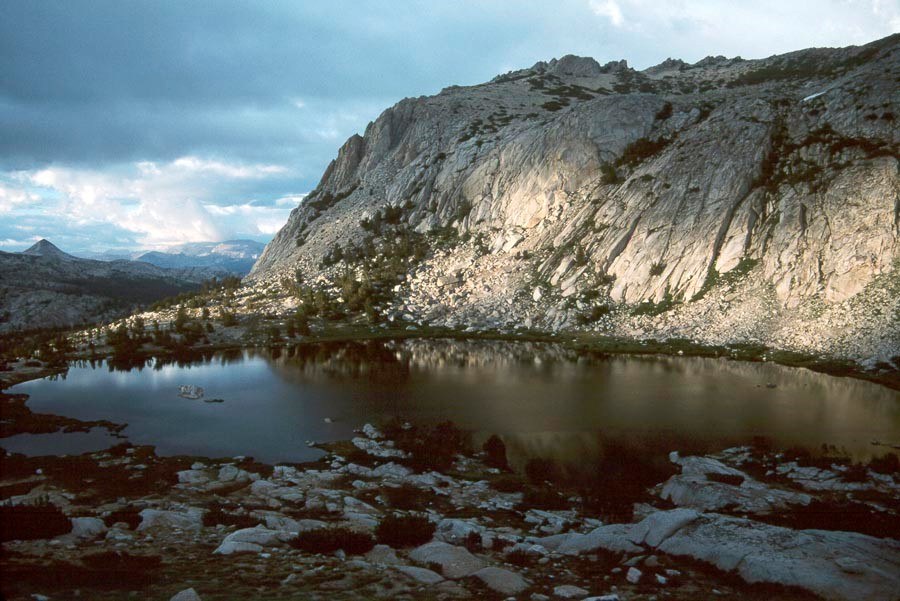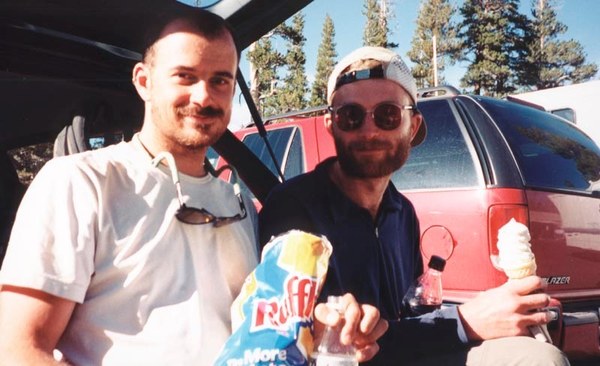
Yosemite, September 1998. Marie, Andrew, and I are standing at a trail junction in northern Yosemite National Park, unable to decide which trail to take. We've had a spectacular week of high country, off-trail rambling in beautiful, high basins. Now we're making our way back to Tuolumne Meadows on-trail. The plan was to go left at this junction and do two more days of hiking through a valley none of us have visited. Now that we're at the junction, we realize we have the option to go right and make it back to the car this evening. Tempting.
Personally, I’m of two minds about this. I want to hike through a new valley, and I want to return to the comforts of civilization. But then, I have the comforts of civilization most nights, while camping in the high Sierra is rare … except that we have been in the backcountry for over two weeks and one more night is not feeling special. Besides, it is just trail walking, not the glories of high country rambling we've had for the past week.
I suspect that my partners are experiencing the same internal conflicts. I’m thinking that I want to head out, but I don’t want to push that opinion too strongly in case Marie or Andrew really want to have one more night out. And part of me would be genuinely happy to go along with them. But maybe Marie and Andrew are not expressing strong opinions for the same reasons, if they also don’t want to override someone else’s desires. If only someone had a strong opinion and would express it!
With each of us conflicted and deferential, we are making zero progress in coming to a decision. Something has to be done to bring us to a definitive decision in a finite amount of time.
If you've spent any time working with groups, you’ve likely had a similar experience. A decision point with multiple options, all with some appeal. Discussion ensues. Points are made. No decision arises, and the process continues with no clear way to move the group forward. How do you organize the discussion? How do you get participants to express their opinions and preferences? How do you bring the group to a definitive decision?
That day in Yosemite, we developed a group decision making process that brought us to a definitive decision in five minutes. I’ve since made a few tweaks, but it remains a process that I have used to make group decisions for the past 20 years. There are three steps:
- A non-binding vote to get opinions out in the open.
- A discussion where people can argue for any option.
- A binding vote.
In my experience, this has always brought the group to a decision in a reasonable amount of time. The vast majority were decisions that everyone was happy with, and in all cases, everyone understood how and why the decision was made. As a leader, my preference is to be collaborative. I want to accommodate the preferences of the trip members as much as possible. This decision process has given me a way to do that while retaining important control and not devolving into unending discussion.

Oh, and our decision in Yosemite? We chose the comforts of civilization on that day.
Learn More
Tom Unger will be offering an evening workshop on Group Decision Making on May 16, 2019, at the Newport Way Library. The goal of the workshop is to give attendees enough knowledge and experience that they can confidently use this process to guide group decisions on their future trips. While the process seems simple, there are a few important subtleties, and we’ll spend time discussing examples and practicing.
 Tom Unger
Tom Unger